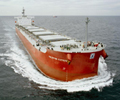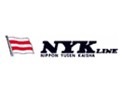Rail transport picking up steam

Despite some congestion in Kazakhstan these past few months, rail is becoming more and more popular as a transport option for freight between China and Rotterdam. “Until recently, parties almost automatically relied on sea shipping to transport cargo from or to the People’s Republic. We can see a new balance taking shape,” says freight forwarder Dirk Wens of Cross Limits Logistics, part of D&R Group.
Shipping a container by sea from China to Rotterdam doesn’t cost that much. However, the preparations and follow-up can be complicated and expensive, making rail an increasingly competitive alternative for freight transport. Wens: “What’s more, China’s coastal region has not only become prohibitively expensive; the air quality has deteriorated to the point where it has a serious impact on the local business climate. You can see more and more plants relocating to inland regions.”
Last and first port of call
And the logistics chain looks very different from a province like Xinjiang, Qinghai, Sichuan or Gansu. When you’re based in one of these areas, rail is suddenly an interesting alternative. “If you’re transporting your product to the UK, for example, rail and short sea via Rotterdam can be a very attractive option. And this even applies to cargo destined for the US. Since Rotterdam serves as the first and last port of call on many Atlantic itineraries, you can save up to two weeks by opting for rail rather than using shipping for the entire route.”
Fashion
But rail is also becoming more and more popular for European destinations. One remarkable trend is the growing number of fashion shipments from China. “This used to be a combination of air freight – for collection launches – and sea shipping. Nowadays, a lot of clients use rail transport to restock hot-selling items halfway through,” explains Dennis de Roo, Managing Director of D&R Group. “By sea costs you 35 to 40 days; rail takes 24. This definitely gives you a bit more flexibility. We’re already handling a sizeable volume of freight for destinations in France. For example Petit Bateau, Café Au Lait shirts and clothing for Carrefour.”
Lower margins thanks to digitalisation
Basically, there are four key rail routes between China and Western Europe. Hamburg, Munich, Duisburg and Tilburg. The latter two connect almost directly with Rotterdam. According to the freight forwarder, the logistics chains with China aren’t always as straightforward as they’re sometimes made out to be. D&R Group’s experience with transporting cargo from and to China goes all the way back to 1977. De Roo: “Of course, there’s a lot you can arrange online, and the process is becoming more transparent. But you still need to know the ins and outs of the business.” Newly-announced shuttle services often turn out to be a one-time affair, and trains don’t always stick to the times and stops published in their schedules. Nevertheless, Cross Limits saw transport to China increase by some 30 percent in 2018. De Roo: “And this is accompanied by a marked decrease in the margins on the journey itself, thanks to increased reliance on all sorts of online booking tools. More and more often, the freight forwarder’s added value lies in supplementary services like customs settlement and handling the last mile. And of course, you could say that’s the way it should be.”
Source: Port of Rotterdam, D&R Group

 Hellenic Shipping News Worldwide Hellenic Shipping News Worldwide, Online Daily Newspaper on Hellenic and International Shipping
Hellenic Shipping News Worldwide Hellenic Shipping News Worldwide, Online Daily Newspaper on Hellenic and International Shipping






















 PG-Software
PG-Software